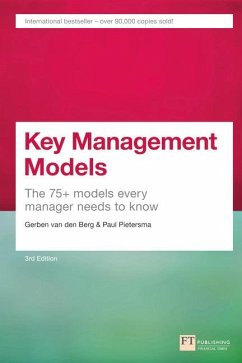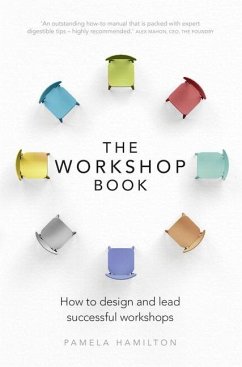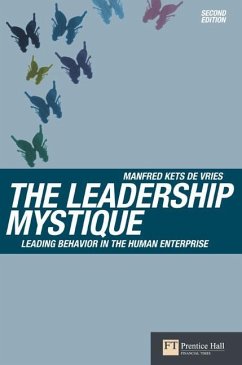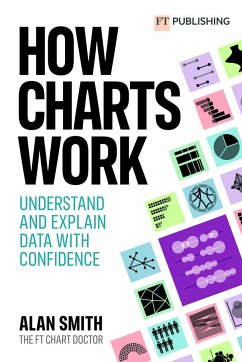
Macroeconomics
Pearson New International Edition

PAYBACK Punkte
54 °P sammeln!
Macroeconomics is widely praised for its ability to present theory as a way of evaluating key macro questions, such as why some countries are rich and others are poor.
Students have a natural interest in what is happening today and what will happen in the near future. Macroeconomics capitalizes on their interest by beginning with business cycles and monetary-fiscal policy in both closed and open economy. After that, Gordon presents a unique dynamic analysis of demand and supply shocks as causes of inflation and unemployment, followed by a dual approach to economic growth in which theory and real-world examples are used to compare rich and poor countries.
MyEconLab New Design is now available for this title! MyEconLab New Design offers:
One Place for All of Your Courses. Improved registration experience and a single point of access for instructors and students who are teaching and learning multiple MyLab/Mastering courses.
A Simplified User Interface. The new user interface offers quick and easy access to Assignments, Study Plan, eText & Results, as well as additional option for course customization.
New Communication Tools. The following new communication tools can be used to foster collaboration, class participation, and group work.
Email: Instructors can send emails to their entire class, to individual students or to instructors who has access to their course.
Discussion Board: The discussion board provides students with a space to respond and react to the discussions you create. These posts can also be separated out into specific topics where students can share their opinions/answers and respond to their fellow classmates’ posts.
Chat/ ClassLive: ClassLive is an interactive chat tool that allows instructors and students to communicate in real time. ClassLive can be used with a group of students or one-on-one to share images or PowerPoint presentations, draw or write objects on a whiteboard, or send and received graphed or plotted equations. ClassLive also has additional classroom management tools, including polling and hand-raising.
Enhanced eText. Available within the online course materials and offline via an iPad app, the enhanced eText allows instructors and students to highlight, bookmark, take notes, and share with one another.
Features + Benefits
Macroeconomics is widely praised for its ability to present theory as a way of evaluating key macro questions, such as why some countries are rich and others are poor.
Students have a natural interest in what is happening today and what will happen in the near future. Macroeconomics capitalizes on their interest by beginning with business cycles and monetary-fiscal policy in both closed and open economy. After that, Gordon presents a unique dynamic analysis of demand and supply shocks as causes of inflation and unemployment, followed by a dual approach to economic growth in which theory and real-world examples are used to compare rich and poor countries.
Theory as a way to evaluate macro questions. Gordon believes that all macro questions relate to a core set of basic macro puzzles and presents theory with this in mind. Students not only see how theory applies to the real world, but they also learn how to recognize the connections between concepts, such as output and unemployment.
Patient and early introduction to business cycles. Because students care most about today’s issues, business cycles and inflation are discussed up front. The IS-LM model is presented early, and an integrated treatment covers monetary and fiscal policy stabilization, fiscal and foreign deficits and national saving, and the interplay between the balance of payments and exchange rates.
A dynamic version of the AS-AD model. Gordon pioneered the dynamic analysis of aggregate demand and supply shocks that can cause inflation and unemployment to be either positively or negatively correlated. In this edition, the rising prices of oil provide a new test for this theory.
A clear distinction between short- and long-run macro models. By clearly distinguishing short-run macro (business cycles and their prevention) from long-run macro (economic growth and the long-run consequences of debt and deficits), Gordon helps students understand how different models relate and connect to one another.
Pedagogically designed figures. Color is used consistently throughout chapters to demonstrate the link between theoretical curves and related data graphs.
Case studies. Directly following theoretical discussions, case studies bring the material to life using real-world examples to which students can relate.
International Perspective boxes. Students gain a well-rounded view of the global economy through International Perspective boxes that compare economic performance in the United States with selected foreign countries.
Self-Tests. At the end of every section, Self-Tests immediately check to ensure students retain the topics covered. Answers are provided at the end of each chapter.
Data Appendixes. A robust set of data tables is available as appendixes, including annual data for the U.S. back to 1875 and quarterly data back to 1947, as well as annual data since 1960 for other leading nations. This data can also be downloaded from the Companion Website .
MyEconLab New Design is now available for this title! MyEconLab New Design offers:
One Place for All of Your Courses. Improved registration experience and a single point of access for instructors and students who are teaching and learning multiple MyLab/Mastering courses.
A Simplified User Interface. The new user interface offers quick and easy access to Assignments, Study Plan, eText & Results, as well as additional option for course customization.
New Communication Tools. The following new communication tools can be used to foster collaboration, class participation, and group work.
Email: Instructors can send emails to their entire class, to individual students or to instructors who has access to their course.
Discussion Board: The discussion board provides students with a space to respond and react to the discussions you create. These posts can also be separated out into specific topics where students can share their opinions/answers and respond to their fellow classmates’ posts.
Chat/ ClassLive: ClassLive is an interactive chat tool that allows instructors and students to communicate in real time. ClassLive can be used with a group of students or one-on-one to share images or PowerPoint presentations, draw or write objects on a whiteboard, or send and received graphed or plotted equations. ClassLive also has additional classroom management tools, including polling and hand-raising.
Enhanced eText. Available within the online course materials and offline via an iPad app, the enhanced eText allows instructors and students to highlight, bookmark, take notes, and share with one another.
CHAPTER 1 What Is Macroeconomics?
1-1 How Macroeconomics Affects Our Everyday Lives
Global Economic Crisis Focus: What Makes It Unique?
1-2 Defining Macroeconomics
1-3 Actual and Natural Real GDP
1-4 Macroeconomics in the Short Run and Long Run
1-5 CASE STUDY: How Does the Global Economic Crisis Compare to Previous Business Cycles?
Global Economic Crisis Focus: How It Differs from 1982—83
1-6 Macroeconomics at the Extremes
1-7 Taming Business Cycles: Stabilization Policy
International Perspective: Differences Between the United States and Europe Before and During the Global Economic Crisis
Global Economic Crisis Focus: New Challenges for Monetary and Fiscal Policy
1-8 The “Internationalization” of Macroeconomics
CHAPTER 2 The Measurement of Income, Prices, and Unemployment
2-1 Why We Care About Income
2-2 The Circular Flow of Income and Expenditure
2-3 What GDP Is, and What GDP Is Not
[BOX]Where to Find the Numbers: A Guide to the Data
2-4 Components of Expenditure
Global Economic Crisis Focus: Which Component of GDP Declined the Most in the Global Economic Crisis?
2-5 The “Magic” Equation and the Twin Deficits
Global Economic Crisis Focus: Chicken or Egg in Recessions?
2-6 Where Does Household Income Come From?
2-7 Nominal GDP, Real GDP, and the GDP Deflator
[BOX] How to Calculate Inflation, Real GDP Growth, or Any Other Growth Rate
2-8 Measuring Unemployment
Understanding the Global Economic Crisis: The Ranks of the Hidden Unemployed
APPENDIX TO CHAPTER 2: How We Measure Real GDP and the Inflation Rate
CHAPTER 3 Income and Interest Rates: The Keynesian Cross Model and the IS Curve
3-1 Business Cycles and the Theory of Income Determination
Global Economic Crisis Focus: What Were the Shocks That Made the 2008—09 Economic Crisis So Severe?
3-2 Income Determination, Unemployment, and the Price Level
3-3 Planned Expenditure
Global Economic Crisis Focus: Financial Market Instability as the Main Cause of the Global Economic Crisis
3-4 The Economy In and Out of Equilibrium
Understanding the Global Economic Crisis: How Changes in Wealth Influence Consumer Spending
3-5 The Multiplier Effect
3-6 Sources of Shifts in Planned Spending
3-7 How Can Monetary Policy Affect Planned Spending?
3-8 The Relation of Autonomous Planned Spending to the Interest Rate
Understanding the Global Economic Crisis: A Central Explanation of Business Cycles Is the Volatility of Investment
3-9 The IS Curve
3-10 Conclusion: The Missing Relation
[BOX] Learning About Diagrams: The IS Curve
APPENDIX TO CHAPTER 3:Allowing for Income Taxes and Income-Dependent Net Exports
CHAPTER 4 Strong and Weak Policy Effects in the IS-LM Model
4-1 Introduction: The Power of Monetary and Fiscal Policy
4-2 Income, the Interest Rate, and the Demand for Money
4-3 The LM Curve
[BOX]Learning About Diagrams: The LM Curve
4-4 The IS Curve Meets the LM Curve
Global Economic Crisis Focus: TITLE TO COME
4-5 Monetary Policy in Action
4-6 How Fiscal Expansion Can “Crowd Out” Private Investment
Global Economic Crisis Focus: TITLE TO COME
4-7 Strong and Weak Effects of Monetary Policy
Understanding the Global Economic Crisis:How Easy Money Helped to Create the Housing Bubble and Bust
4-8 Strong and Weak Effects of Fiscal Policy
4-9 Using Fiscal and Monetary Policy Together
International Perspective: Monetary Policy Hits the Zero Lower Bound in Japan and the United States
APPENDIX TO CHAPTER 4:The Elementary Algebra of the IS-LM Model
CHAPTER 5 Financial Markets, Financial Regulation, and Economic Instability
5-1 Introduction: Financial Markets and Macroeconomics
5-2 CASE STUDY: Dimensions of the Global Economic Crisis
5-3 Financial Institutions, Balance Sheets, and Leverage
5-4 A Hardy Perennial: Bubbles and Crashes
Understanding the Global Economic Crisis: Two Bubbles: 1927—29 in the Stock Market Versus 2000—06 in the Housing Market
5-5 Financial Innovation and the Subprime Mortgage Market
5-6 The IS-LM Model, Financial Markets, and the Monetary Policy Dilemma
[BOX] Why Do Asset Purchases Reduce Interest Rates?
Understanding the Global Economic Crisis: The IS-LM Summary of the Causes of the Global Economic Crisis
5-7 The Fed’s New Instrument: Quantitative Easing
5-8 How the Crisis Became Worldwide and the Dilemma for Policymakers
International Perspective: Weighing the Causes: Why Did Canada Perform Better?
CHAPTER 6 The Government Budget, the Government Debt, and Limitations of Fiscal Policy
6-1 Introduction: Can Fiscal Policy Rescue Monetary Policy from Ineffectiveness?
6-2 The Pervasive Effects of the Government Budget
6-3 CASE STUDY:The Government Budget in Historical Perspective
6-4 Automatic Stabilization and Discretionary Fiscal Policy
Global Economic Crisis Focus: Automatic Stabilization and Fiscal Stimulus in the Crisis
6-5 Government Debt Basic Concepts
6-6 Will the Government Remain Solvent?
International Perspective: The Debt-GDP Ratio: How Does the United States Compare?
6-7 CASE STUDY: Historical Behavior of the Debt-GDP Ratio Since 1790
6-8 Factors Influencing the Multiplier Effect of a Fiscal Policy Stimulus
6-9 CASE STUDY: The Fiscal Policy Stimulus of 2008—11
6-10 Government Spending and Transfers to States/Localities
Understanding the Global Economic Crisis: Comparing the Obama Stimulus with FDR’s New Deal
6-11 Conclusion: Strengths and Limitations of Fiscal Policy
CHAPTER 7 International Trade, Exchanges Rates, and Macroeconomic Policy
7-1 Introduction
7-2 The Current Account and Balance of Payments
7-3 Exchange Rates
7-4 The Market for Foreign Exchange
7-5 Real Exchange Rates and Purchasing Power Parity
International Perspective: Big Mac Meets PPP
7-6 Exchange Rate Systems
7-7 CASE STUDY: Asia Intervenes with Buckets to Buy Dollars and Finance the U.S. Current Account Deficit–How Long Can This Continue?
7-8 Determinants of Net Exports
7-9 The Real Exchange Rate and Interest Rate
7-10 Effects of Monetary and Fiscal Policy with Fixed and Flexible Exchange Rates
Global Economic Crisis Focus: Is the United States Prevented from Implementing a
Fiscal Policy Stimulus by Its Flexible Exchange Rate?
[BOX] Summary of Monetary and Fiscal Policy Effects in Open Economies
7-11 Conclusion: Economic Policy in the Open Economy
CHAPTER 8 Aggregate Demand, Aggregate Supply, and the Great Depression
8-1 Combining Aggregate Demand with Aggregate Supply
8-2 Flexible Prices and the AD Curve
8-3 Shifting the Aggregate Demand Curve with Monetary and Fiscal Policy
Global Economic Crisis Focus: The Crisis Was a Demand Problem Not Involving Supply
[BOX] Learning About Diagrams: The AD Curve
8-4 Alternative Shapes of the Short-Run Aggregate Supply Curve
8-5 The Short-Run Aggregate Supply (SAS) Cur
Students have a natural interest in what is happening today and what will happen in the near future. Macroeconomics capitalizes on their interest by beginning with business cycles and monetary-fiscal policy in both closed and open economy. After that, Gordon presents a unique dynamic analysis of demand and supply shocks as causes of inflation and unemployment, followed by a dual approach to economic growth in which theory and real-world examples are used to compare rich and poor countries.
MyEconLab New Design is now available for this title! MyEconLab New Design offers:
One Place for All of Your Courses. Improved registration experience and a single point of access for instructors and students who are teaching and learning multiple MyLab/Mastering courses.
A Simplified User Interface. The new user interface offers quick and easy access to Assignments, Study Plan, eText & Results, as well as additional option for course customization.
New Communication Tools. The following new communication tools can be used to foster collaboration, class participation, and group work.
Email: Instructors can send emails to their entire class, to individual students or to instructors who has access to their course.
Discussion Board: The discussion board provides students with a space to respond and react to the discussions you create. These posts can also be separated out into specific topics where students can share their opinions/answers and respond to their fellow classmates’ posts.
Chat/ ClassLive: ClassLive is an interactive chat tool that allows instructors and students to communicate in real time. ClassLive can be used with a group of students or one-on-one to share images or PowerPoint presentations, draw or write objects on a whiteboard, or send and received graphed or plotted equations. ClassLive also has additional classroom management tools, including polling and hand-raising.
Enhanced eText. Available within the online course materials and offline via an iPad app, the enhanced eText allows instructors and students to highlight, bookmark, take notes, and share with one another.
Features + Benefits
Macroeconomics is widely praised for its ability to present theory as a way of evaluating key macro questions, such as why some countries are rich and others are poor.
Students have a natural interest in what is happening today and what will happen in the near future. Macroeconomics capitalizes on their interest by beginning with business cycles and monetary-fiscal policy in both closed and open economy. After that, Gordon presents a unique dynamic analysis of demand and supply shocks as causes of inflation and unemployment, followed by a dual approach to economic growth in which theory and real-world examples are used to compare rich and poor countries.
Theory as a way to evaluate macro questions. Gordon believes that all macro questions relate to a core set of basic macro puzzles and presents theory with this in mind. Students not only see how theory applies to the real world, but they also learn how to recognize the connections between concepts, such as output and unemployment.
Patient and early introduction to business cycles. Because students care most about today’s issues, business cycles and inflation are discussed up front. The IS-LM model is presented early, and an integrated treatment covers monetary and fiscal policy stabilization, fiscal and foreign deficits and national saving, and the interplay between the balance of payments and exchange rates.
A dynamic version of the AS-AD model. Gordon pioneered the dynamic analysis of aggregate demand and supply shocks that can cause inflation and unemployment to be either positively or negatively correlated. In this edition, the rising prices of oil provide a new test for this theory.
A clear distinction between short- and long-run macro models. By clearly distinguishing short-run macro (business cycles and their prevention) from long-run macro (economic growth and the long-run consequences of debt and deficits), Gordon helps students understand how different models relate and connect to one another.
Pedagogically designed figures. Color is used consistently throughout chapters to demonstrate the link between theoretical curves and related data graphs.
Case studies. Directly following theoretical discussions, case studies bring the material to life using real-world examples to which students can relate.
International Perspective boxes. Students gain a well-rounded view of the global economy through International Perspective boxes that compare economic performance in the United States with selected foreign countries.
Self-Tests. At the end of every section, Self-Tests immediately check to ensure students retain the topics covered. Answers are provided at the end of each chapter.
Data Appendixes. A robust set of data tables is available as appendixes, including annual data for the U.S. back to 1875 and quarterly data back to 1947, as well as annual data since 1960 for other leading nations. This data can also be downloaded from the Companion Website .
MyEconLab New Design is now available for this title! MyEconLab New Design offers:
One Place for All of Your Courses. Improved registration experience and a single point of access for instructors and students who are teaching and learning multiple MyLab/Mastering courses.
A Simplified User Interface. The new user interface offers quick and easy access to Assignments, Study Plan, eText & Results, as well as additional option for course customization.
New Communication Tools. The following new communication tools can be used to foster collaboration, class participation, and group work.
Email: Instructors can send emails to their entire class, to individual students or to instructors who has access to their course.
Discussion Board: The discussion board provides students with a space to respond and react to the discussions you create. These posts can also be separated out into specific topics where students can share their opinions/answers and respond to their fellow classmates’ posts.
Chat/ ClassLive: ClassLive is an interactive chat tool that allows instructors and students to communicate in real time. ClassLive can be used with a group of students or one-on-one to share images or PowerPoint presentations, draw or write objects on a whiteboard, or send and received graphed or plotted equations. ClassLive also has additional classroom management tools, including polling and hand-raising.
Enhanced eText. Available within the online course materials and offline via an iPad app, the enhanced eText allows instructors and students to highlight, bookmark, take notes, and share with one another.
CHAPTER 1 What Is Macroeconomics?
1-1 How Macroeconomics Affects Our Everyday Lives
Global Economic Crisis Focus: What Makes It Unique?
1-2 Defining Macroeconomics
1-3 Actual and Natural Real GDP
1-4 Macroeconomics in the Short Run and Long Run
1-5 CASE STUDY: How Does the Global Economic Crisis Compare to Previous Business Cycles?
Global Economic Crisis Focus: How It Differs from 1982—83
1-6 Macroeconomics at the Extremes
1-7 Taming Business Cycles: Stabilization Policy
International Perspective: Differences Between the United States and Europe Before and During the Global Economic Crisis
Global Economic Crisis Focus: New Challenges for Monetary and Fiscal Policy
1-8 The “Internationalization” of Macroeconomics
CHAPTER 2 The Measurement of Income, Prices, and Unemployment
2-1 Why We Care About Income
2-2 The Circular Flow of Income and Expenditure
2-3 What GDP Is, and What GDP Is Not
[BOX]Where to Find the Numbers: A Guide to the Data
2-4 Components of Expenditure
Global Economic Crisis Focus: Which Component of GDP Declined the Most in the Global Economic Crisis?
2-5 The “Magic” Equation and the Twin Deficits
Global Economic Crisis Focus: Chicken or Egg in Recessions?
2-6 Where Does Household Income Come From?
2-7 Nominal GDP, Real GDP, and the GDP Deflator
[BOX] How to Calculate Inflation, Real GDP Growth, or Any Other Growth Rate
2-8 Measuring Unemployment
Understanding the Global Economic Crisis: The Ranks of the Hidden Unemployed
APPENDIX TO CHAPTER 2: How We Measure Real GDP and the Inflation Rate
CHAPTER 3 Income and Interest Rates: The Keynesian Cross Model and the IS Curve
3-1 Business Cycles and the Theory of Income Determination
Global Economic Crisis Focus: What Were the Shocks That Made the 2008—09 Economic Crisis So Severe?
3-2 Income Determination, Unemployment, and the Price Level
3-3 Planned Expenditure
Global Economic Crisis Focus: Financial Market Instability as the Main Cause of the Global Economic Crisis
3-4 The Economy In and Out of Equilibrium
Understanding the Global Economic Crisis: How Changes in Wealth Influence Consumer Spending
3-5 The Multiplier Effect
3-6 Sources of Shifts in Planned Spending
3-7 How Can Monetary Policy Affect Planned Spending?
3-8 The Relation of Autonomous Planned Spending to the Interest Rate
Understanding the Global Economic Crisis: A Central Explanation of Business Cycles Is the Volatility of Investment
3-9 The IS Curve
3-10 Conclusion: The Missing Relation
[BOX] Learning About Diagrams: The IS Curve
APPENDIX TO CHAPTER 3:Allowing for Income Taxes and Income-Dependent Net Exports
CHAPTER 4 Strong and Weak Policy Effects in the IS-LM Model
4-1 Introduction: The Power of Monetary and Fiscal Policy
4-2 Income, the Interest Rate, and the Demand for Money
4-3 The LM Curve
[BOX]Learning About Diagrams: The LM Curve
4-4 The IS Curve Meets the LM Curve
Global Economic Crisis Focus: TITLE TO COME
4-5 Monetary Policy in Action
4-6 How Fiscal Expansion Can “Crowd Out” Private Investment
Global Economic Crisis Focus: TITLE TO COME
4-7 Strong and Weak Effects of Monetary Policy
Understanding the Global Economic Crisis:How Easy Money Helped to Create the Housing Bubble and Bust
4-8 Strong and Weak Effects of Fiscal Policy
4-9 Using Fiscal and Monetary Policy Together
International Perspective: Monetary Policy Hits the Zero Lower Bound in Japan and the United States
APPENDIX TO CHAPTER 4:The Elementary Algebra of the IS-LM Model
CHAPTER 5 Financial Markets, Financial Regulation, and Economic Instability
5-1 Introduction: Financial Markets and Macroeconomics
5-2 CASE STUDY: Dimensions of the Global Economic Crisis
5-3 Financial Institutions, Balance Sheets, and Leverage
5-4 A Hardy Perennial: Bubbles and Crashes
Understanding the Global Economic Crisis: Two Bubbles: 1927—29 in the Stock Market Versus 2000—06 in the Housing Market
5-5 Financial Innovation and the Subprime Mortgage Market
5-6 The IS-LM Model, Financial Markets, and the Monetary Policy Dilemma
[BOX] Why Do Asset Purchases Reduce Interest Rates?
Understanding the Global Economic Crisis: The IS-LM Summary of the Causes of the Global Economic Crisis
5-7 The Fed’s New Instrument: Quantitative Easing
5-8 How the Crisis Became Worldwide and the Dilemma for Policymakers
International Perspective: Weighing the Causes: Why Did Canada Perform Better?
CHAPTER 6 The Government Budget, the Government Debt, and Limitations of Fiscal Policy
6-1 Introduction: Can Fiscal Policy Rescue Monetary Policy from Ineffectiveness?
6-2 The Pervasive Effects of the Government Budget
6-3 CASE STUDY:The Government Budget in Historical Perspective
6-4 Automatic Stabilization and Discretionary Fiscal Policy
Global Economic Crisis Focus: Automatic Stabilization and Fiscal Stimulus in the Crisis
6-5 Government Debt Basic Concepts
6-6 Will the Government Remain Solvent?
International Perspective: The Debt-GDP Ratio: How Does the United States Compare?
6-7 CASE STUDY: Historical Behavior of the Debt-GDP Ratio Since 1790
6-8 Factors Influencing the Multiplier Effect of a Fiscal Policy Stimulus
6-9 CASE STUDY: The Fiscal Policy Stimulus of 2008—11
6-10 Government Spending and Transfers to States/Localities
Understanding the Global Economic Crisis: Comparing the Obama Stimulus with FDR’s New Deal
6-11 Conclusion: Strengths and Limitations of Fiscal Policy
CHAPTER 7 International Trade, Exchanges Rates, and Macroeconomic Policy
7-1 Introduction
7-2 The Current Account and Balance of Payments
7-3 Exchange Rates
7-4 The Market for Foreign Exchange
7-5 Real Exchange Rates and Purchasing Power Parity
International Perspective: Big Mac Meets PPP
7-6 Exchange Rate Systems
7-7 CASE STUDY: Asia Intervenes with Buckets to Buy Dollars and Finance the U.S. Current Account Deficit–How Long Can This Continue?
7-8 Determinants of Net Exports
7-9 The Real Exchange Rate and Interest Rate
7-10 Effects of Monetary and Fiscal Policy with Fixed and Flexible Exchange Rates
Global Economic Crisis Focus: Is the United States Prevented from Implementing a
Fiscal Policy Stimulus by Its Flexible Exchange Rate?
[BOX] Summary of Monetary and Fiscal Policy Effects in Open Economies
7-11 Conclusion: Economic Policy in the Open Economy
CHAPTER 8 Aggregate Demand, Aggregate Supply, and the Great Depression
8-1 Combining Aggregate Demand with Aggregate Supply
8-2 Flexible Prices and the AD Curve
8-3 Shifting the Aggregate Demand Curve with Monetary and Fiscal Policy
Global Economic Crisis Focus: The Crisis Was a Demand Problem Not Involving Supply
[BOX] Learning About Diagrams: The AD Curve
8-4 Alternative Shapes of the Short-Run Aggregate Supply Curve
8-5 The Short-Run Aggregate Supply (SAS) Cur
Macroeconomics is widely praised for its ability to present theory as a way of evaluating key macro questions, such as why some countries are rich and others are poor. Students have a natural interest in what is happening today and what will happen in the near future. Macroeconomics capitalizes on their interest by beginning with business cycles and monetary-fiscal policy in both closed and open economy. After that, Gordon presents a unique dynamic analysis of demand and supply shocks as causes of inflation and unemployment, followed by a dual approach to economic growth in which theory and real-world examples are used to compare rich and poor countries. MyEconLab New Design is now available for this title! MyEconLab New Design offers: 1. One Place for All of Your Courses. Improved registration experience and a single point of access for instructors and students who are teaching and learning multiple MyLab/Mastering courses. 2. A Simplified User Interface. The new user interface offers quick and easy access to Assignments, Study Plan, eText & Results, as well as additional option for course customization. 3. New Communication Tools. The following new communication tools can be used to foster collaboration, class participation, and group work. * Email: Instructors can send emails to their entire class, to individual students or to instructors who has access to their course. * Discussion Board: The discussion board provides students with a space to respond and react to the discussions you create. These posts can also be separated out into specific topics where students can share their opinions/answers and respond to their fellow classmates' posts. * Chat/ ClassLive: ClassLive is an interactive chat tool that allows instructors and students to communicate in real time. ClassLive can be used with a group of students or one-on-one to share images or PowerPoint presentations, draw or write objects on a whiteboard, or send and received graphed or plotted equations. ClassLive also has additional classroom management tools, including polling and hand-raising. 4. Enhanced eText. Available within the online course materials and offline via an iPad app, the enhanced eText allows instructors and students to highlight, bookmark, take notes, and share with one another.
Dieser Artikel kann nur an eine deutsche Lieferadresse ausgeliefert werden.












